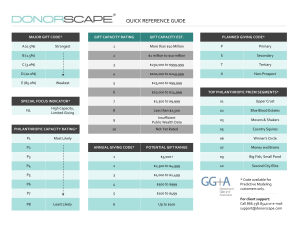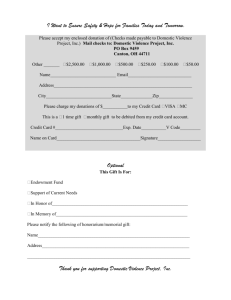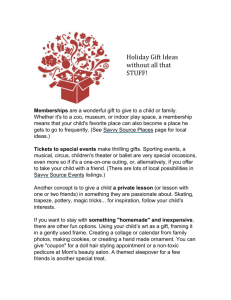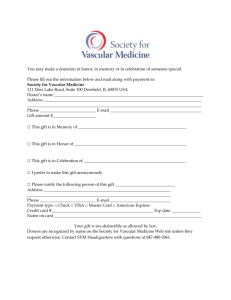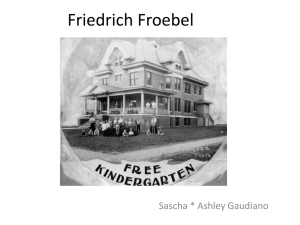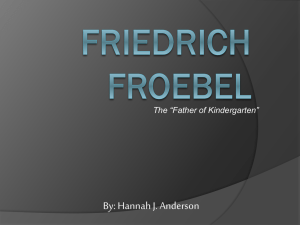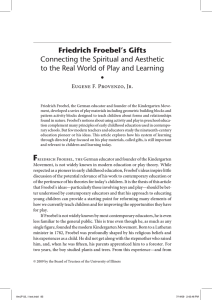human development - gozips.uakron.edu
advertisement
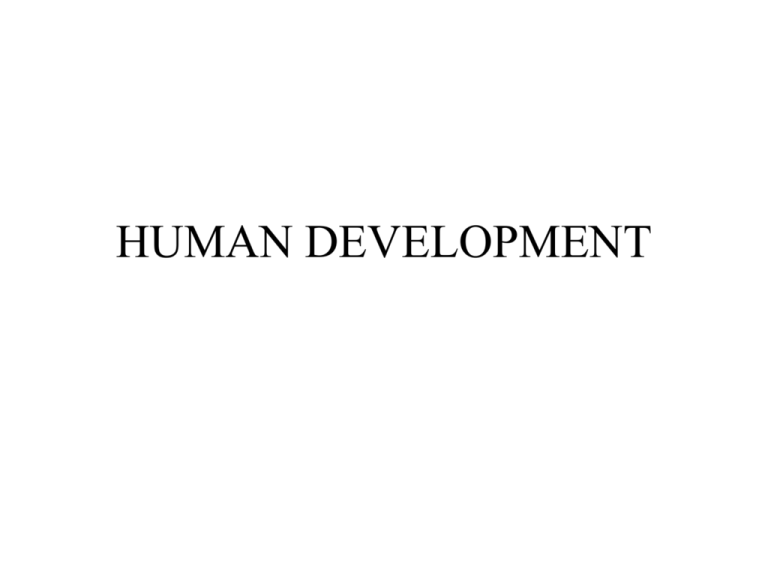
HUMAN DEVELOPMENT HUMAN DEVELOPMENT • Development. The systematic continuities and changes in the individual that occur between conception and death. – Systematic—Orderly, patterned, and relatively enduring – Continuities—Ways in which we remain the same or continue over time • Development. The scientific study of qualitative and quantitative changes that occur in people over time. – Qualitative—Change in kind or structure (i.e., intelligence, beliefs) – Quantitative—Cumulative and measurable changes that occur (i.e., height, weight) WHAT WE BELIEVE ABOUT HUMAN DEVELOPMENT • Humans are resilient. – Plasticity. The capacity for change in response to positive or negative life experiences • People help shape their own development. – Bidirectional. Development is an interplay or symbiotic relationship between the individual and his or her environment • Knowledge is useful. – For infants, stimulation enhances awareness which later leads to curiosity and pursuit • Stress elevates when the environment is less predictable, manageable, and controllable. Ponder. Can there be growth or development in the absence of stimulation? What kind of growth? • Play is the central means by which we grow and develop. Initially, it is how we engage the world. – According to Locke, Play is necessary for imagination and fancy development – According to Hellerdorn, et. al. (1994), Play is described as the foundation of learning and mental health in families • What do we learn through play? How essential is Play? Cultural/Socialization Social Rules Skill Development & Comparison Knowledge of Right & Wrong • According to Spariosu, the activity of play may have both rational and irrational meanings for us. – It is possible that play is an activity that has prehistoric roots for humans (Play/Socialization/Survival) – Some suggest that play is a precursor to rationality. It’s a means by which we collect information about the world and engage the world Forms of Play • Agon (Conflict). It was once believed that the ancient Greek gods played with humans by creating challenges and conflicts for them to overcome (war, politics, and physical and social competition). • Mimesis (Imitation). Play through rituals, imitations, and theatrical expressions. This is believed to bring them closer to the gods. Also seen as symbolic play • Chaos. The order and disorder of nature and that which is manipulated by the gods. Through play, we try to predict the actions of the gods to circumvent reality. Believe in game and chance (Looking for signs by throwing bones, flipping coins, drawing straws—games of chance/gambling) Shaping Rational Thought on Play • Friedrich von Schiller viewed play as excess energy from which all creative artistic and spiritual activity grows. • Johan Pestalozzi purported that children were supposed to learn naturally from their encounters with real things. Learning is optimized by doing. • Friedrich Froebel noted the importance of the play-based curriculum. – Froebel identified gifts (objects) could be situated and manipulated in certain ways to optimize learning and educational outcomes in children. – Through play, children develop ideas and questions. Consequently, they grow into maturity….Kindergarden. – Froebel’s play based curriculum was seen as both rational and spiritual towards building children into competence. Froebel’s Gifts and Occupations • First gifts. Six small yarn balls, one each in a primary or secondary color • Second gift. A small wood ball, wood cylinder, and wood cube • Third gift. A small wooden cube, composed of eight component cubes • Fourth gift. A small wooden cube, composed of eight rectangular blocks • Fifth gift. A larger wooden cube, composed of 27 cubes • Sixth gift. A comparably sized wooden cube, composed of 27 rectangular blocks • Seventh gift. Wooden tablets (squares, half-squares, triangles, half-triangles, third-triangles) • Eighth gift. Wooden sticks (lines) and metal curves (circles, half circles, quadrants) • Ninth gift. Points (beans, seeds, pebbles, holes in paper) • Tenth gift. Peas (or pellets) construction, with sticks • Occupations: Plastic clay (solids), Paper folding (surfaces), Weaving (lines), Drawing (lines), Stringing beads (points), Painting (surfaces). Froebel’s Kindergarden Curriculum • The Ball. Simulating the relationship of objects in the world to one another and for representing our connection to one another through games • Building Blocks. Construction materials to simulate. • Sticks. For pattern creation to simulate letters • Pricking Sheets. Creating patterns and sewing • Many of the basic tenants and resources utilized by Froebel continue to be implemented in daycares, preschools, and kindergardens today. Influences on Play • Media influences on play. • Technological influences on play. • Cultural influences on play. – Beckoning the Chicken. Culturally specific and symbolically indicative of summoning and feeding birds. – Patty-cake. Symbolic of baking bread. – Hide & Seek Musical chairs – Double Dutch Ring around the roses – Red light green light Duck duck goose – Hop scotch Chase games--Shark (it) – Jacks Cowboys/Indians--Tarzan – Family feud Tea sets – Wheel of fortune Simon says? – Dominoes – Checkers/Chess Spin the bottle The Influence of Darwin’s Evolutionary Theory on Play • G. Stanley Hall. “Recapitulation Theory” Throughout the process of human development, we repeat the development of the species. – – – – – Animal Savage Nomad Agricultural/settlement Tribal Climbing, swinging Tag, hide-and-seek, hunting games Pet care Digging in sand, doll play Team games • Accordingly, by passing through these stages we are able to get those things out of our system and focus on more civilized things (critical thinking and expanded consciousness). • Hall was instrumental in noting the importance of tracking behavioral progress in children. Ideas instrumental in the shaping of theorists such as Mildred Parten, Jean Piaget, and Kenneth Rubin. Karl Groos • According to Groos, lower special animals do not play (insects, fish, snakes, and toads). However, play is identified essential in higher animals (mammals). • Play is seen as an adaptive process. Play is seen as an essential survival activity in which higher animals practice behaviors necessary for survival. Also, the higher the species, the greater the period of play as instrumental for development. – Experimental Play. Sensory and motor practice—object manipulation, construction, and games with rules. – Socionomic Play. Provides practice for interpersonal skills, including chase and rough-and-tumble games, social and family (dramatic) play, and imitation. John Dewey and Pragmatism on Play • Play provides a more generalized internalizing of knowledge in young children. • Play is the free, intrinsically interesting exploration of society and nature. According to Dewey, to practice freedom, one must experience freedom. • Play is also seen as experimental and experiential. Consequently, we are learning skills of socialization (political, religious, or economic). Vytgotsky’s View of Play • Play is seen as a developmental mechanism that allows children to turn actions into meanings and to internalize those meanings. • For the preschool and early school years, play becomes a means by which children internalize the knowledge and expectations of culture. Johan Huizinga on Play • Play has social and historical function. – Through play, we evolve into roles later to be realized in society. • Play serves social functions: – – – – Forming social groups Creating distinct communities within society Creating social status among groups Social cohesion, transforming culture. – Later play evolves into physical performance, adult festival, sports.
